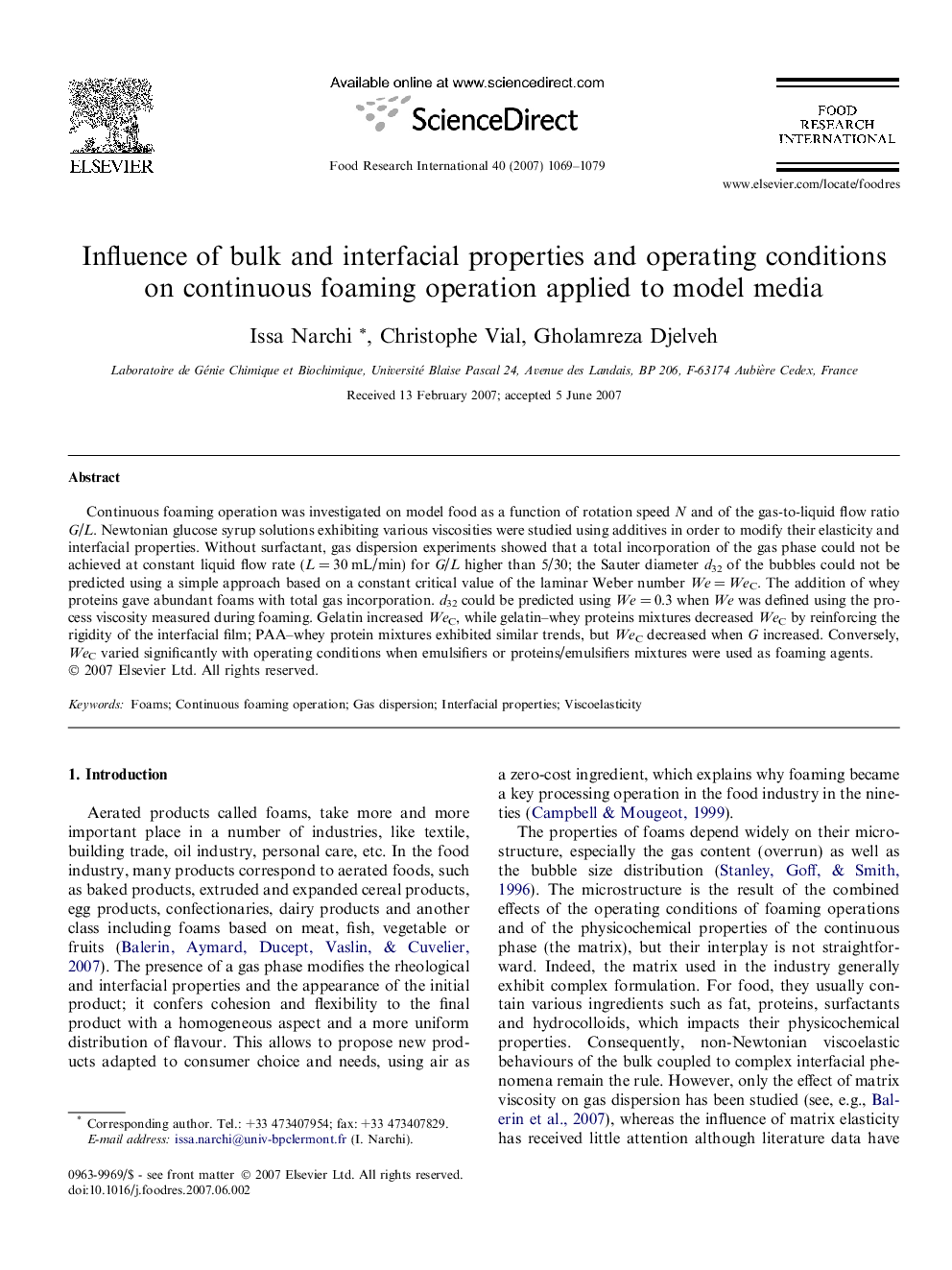| Article ID | Journal | Published Year | Pages | File Type |
|---|---|---|---|---|
| 4562976 | Food Research International | 2007 | 11 Pages |
Continuous foaming operation was investigated on model food as a function of rotation speed N and of the gas-to-liquid flow ratio G/L. Newtonian glucose syrup solutions exhibiting various viscosities were studied using additives in order to modify their elasticity and interfacial properties. Without surfactant, gas dispersion experiments showed that a total incorporation of the gas phase could not be achieved at constant liquid flow rate (L = 30 mL/min) for G/L higher than 5/30; the Sauter diameter d32 of the bubbles could not be predicted using a simple approach based on a constant critical value of the laminar Weber number We = WeC. The addition of whey proteins gave abundant foams with total gas incorporation. d32 could be predicted using We = 0.3 when We was defined using the process viscosity measured during foaming. Gelatin increased WeC, while gelatin–whey proteins mixtures decreased WeC by reinforcing the rigidity of the interfacial film; PAA–whey protein mixtures exhibited similar trends, but WeC decreased when G increased. Conversely, WeC varied significantly with operating conditions when emulsifiers or proteins/emulsifiers mixtures were used as foaming agents.
